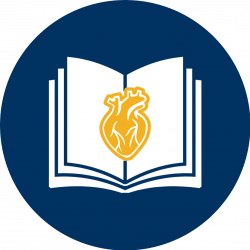“Peter Parker was bitten by a radioactive spider.” “Superman is an alien who escaped his dying planet and grew up on earth.” “Isaac Newton discovered gravity when an apple hit his head.” These are all stories that have gone on to become mythologized in our cultural consciousness.
And if you’re growing up with an interest in science history, you hear stories of great accomplishment and serendipity. You hear about how Alexander Fleming accidentally discovered penicillin on a petri dish. How Albert Einstein wrote groundbreaking papers while working as a patent clerk. How Marie Curie worked in a converted shed filled with radiation that would eventually kill her. These are scientific stories that have acquired mythic force, turning their subjects into legends. Great scientists of history live on in such legends, and in prizes and posters and chemical elements that bear their names. As a child, I looked up to them. I wanted to follow them into science.
I was seventeen years old when I first worked in a proper, functional, high-end laboratory. The lab did not really have much use for a wide-eyed kid with no training, so they let me follow the scientists around. I was like a stray puppy who could also ask questions and mix 80% alcohol solutions. I trailed them into the lab with my shoe covers and latex gloves and a lab coat that, for the first time, hadn’t been lying around unwashed and worn by dozens of students over an indeterminate period of time. One of the newer hires took a photo of me, grinning in my lab coat and glasses, to send to my parents.
Everything was a sensory revelation. The cool feel of ethanol through my gloves when I sprayed my hands with sanitizing solution. The hypnotic way erythrocytes fell slowly through a density gradient like flakes in a snow globe. The surreal brightness of illuminated macrophages on a slide under the microscope. The hum of the centrifuge. There would be moments when my vision tunnelled, moments when it was just me and whatever I was doing at the time — watching test tubes spin, or pipetting solutions into wells.
The lab was working on stimulating white blood cells to attack cancerous cells. It was, in fact, just one division in a biotechnology company. The scientists received trial molecules and hopeful drugs and tested them on the blood cells they collected from volunteers, then passed on the results to the next lab in the chain. I counted cells through microscopes as they set up 60-well trays, centrifuging tubes of diluted blood and gradient as they tagged samples with fluorescent markers. I went to lunch in the office canteen with them, and we ended up drinking a lot of Bangalore filter coffee and talking about science and movies and our lives while waiting for batches in the incubator. I came away from that internship understanding a couple of things about the realities of working in science.
Science wasn’t about spending hours hunched over equipment, making discoveries through sheer persistence and some spark of genius, and emerging only to sleep and perhaps eat food. There were also empty hours waiting for processes to run and dishes to incubate, time filled in by tag-teaming other tasks and taking lunch breaks together. There were the same daily tasks done by rote, things like sticking to lab protocol and running endless variations of the same assays to find what gave the best results.
And there was one other takeaway that I didn’t fully internalize until much later.
I have an origin story for my interest in science. It all started with a book given to me on my sixth birthday — probably too advanced for me, so I only picked it up a few years later. It was a history of science, the second in a trilogy of thick hardbound volumes stuffed with light prose and fun facts and lots of pictures for the children who would read them. It introduced me to the scientists behind big breakthroughs of the 1500s to 1800s. They were my Spidermen and Supermen and Wonder Women. They loomed in my imagination as nearly infallible, unreachable heroes who set up their own labs and equipment and threw themselves wholeheartedly into the pursuit of knowledge.
But as I look at more recent scientific history, and I look at scientists I have personally met and worked with, the ideal of the lone genius begins to crumble a little. It’s easy to forget that contemporaries regularly corresponded or that professors had colleagues. It’s easy to forget that, especially in the 1700s and earlier, the people who became renowned scientists were often wealthy, and people who could dedicate themselves to their fields without worrying about cooking or doing laundry or working for a living. It’s easy to forget that current Nobel laureates, as only a handful win each year, are often assisted by several years’ worth of fellow researchers and graduate students. There’s a whole network of people and conversations that support every achievement. There’s so much to do and discover, for so many people, and it’s not just about the glory, but also the process.
The solitary scientific genius mythologized by society isn’t quite real. We forget to see the communication and collaboration behind the legends. And if I look between a bust of Hippocrates, and a group photograph of Jennifer Doudna’s lab outside Li Ka Shing, I know which one makes me feel more hopeful about becoming a biologist.
Kaivallya is a UC Berkeley student majoring in molecular cell biology with a minor in creative writing. She is also one of Atrium’s editors.

